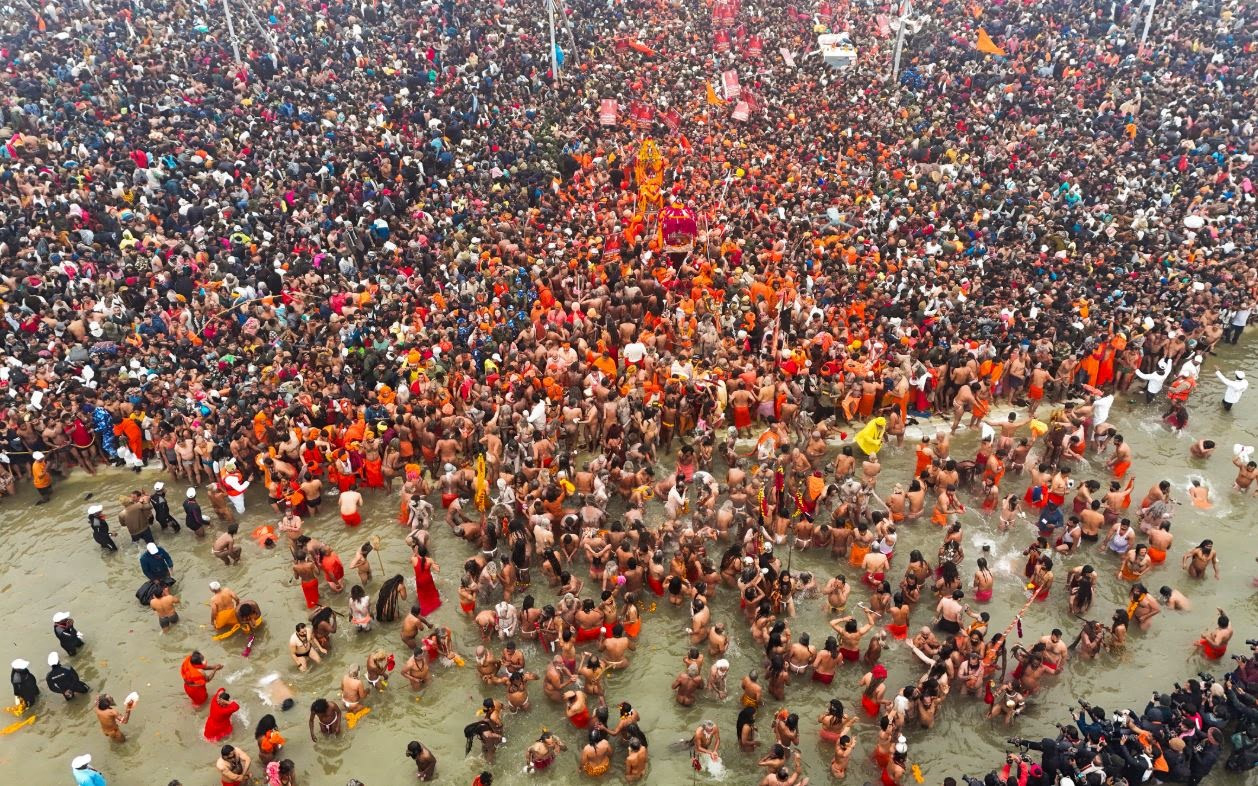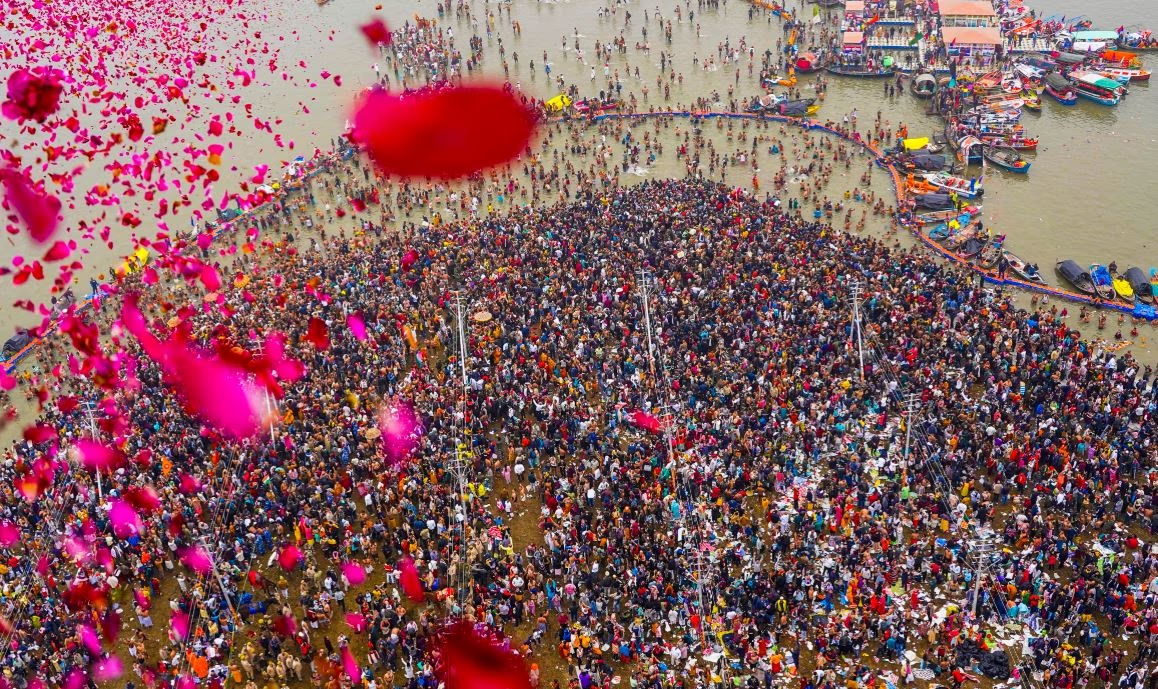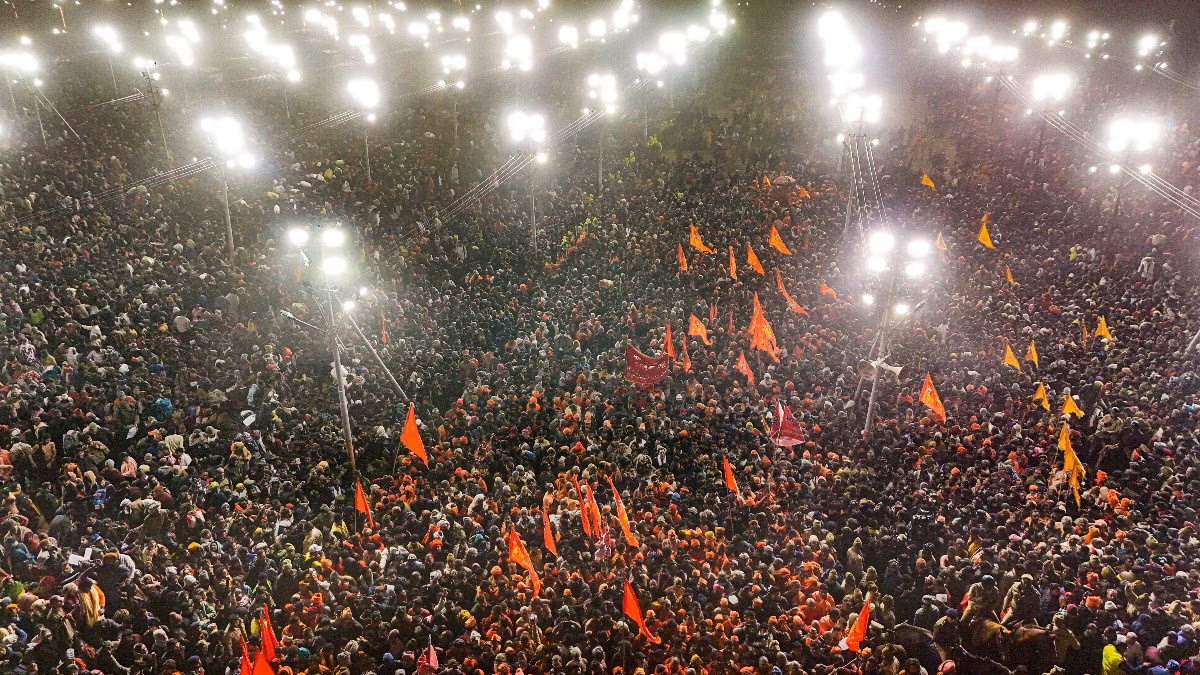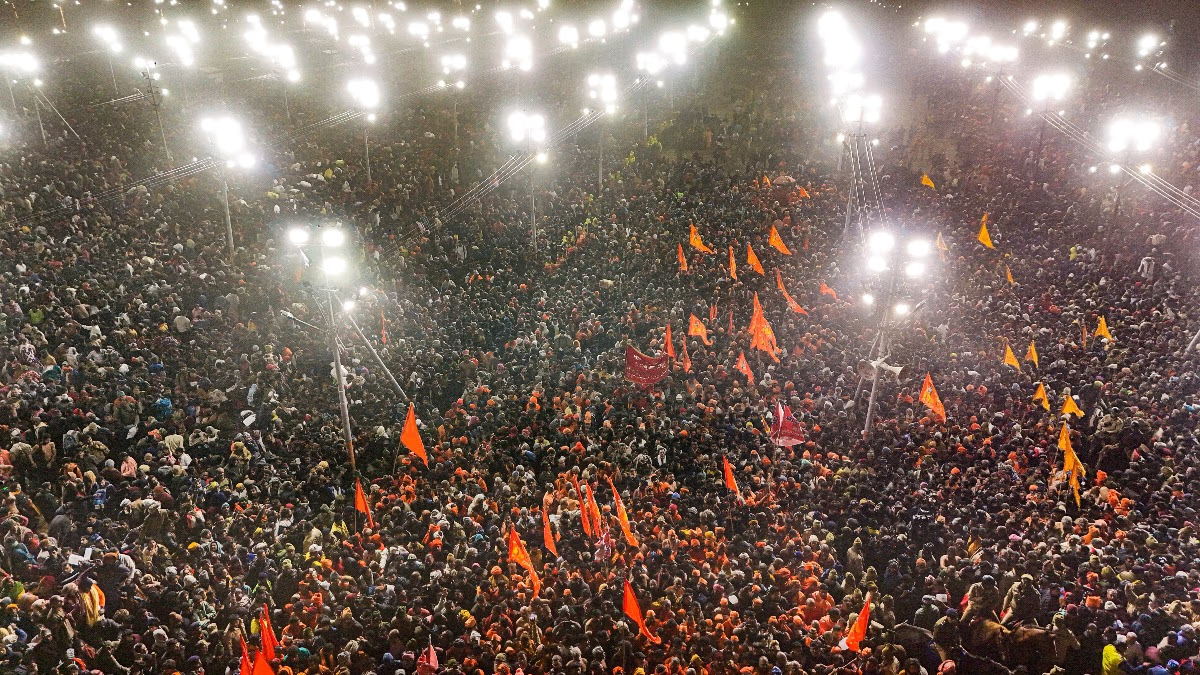An estimated 450 million devotees are expected to bathe at the sacred confluence during the Prayagraj Mahakumbh. In just the past two days, over 50 million pilgrims have attended the Kumbh Mela, setting a record. But how exactly is such a massive crowd counted? Is it mere estimation, or is there a precise method behind the numbers? Let's delve into the advanced techniques used to measure attendance at the world's largest religious gathering.
Counting the Crowd: The Process Unveiled
Mahakumbh 2025 is particularly special as it coincides with a rare celestial alignment occurring after 144 years. As this massive event unfolds, the UP government has leveraged high-tech equipment to count the influx of devotees, utilizing AI-based cameras for precise tracking.
The government has constituted a special team called the Crowd Assessment Team, which is meticulously counting attendees in real-time. They employ specialized cameras powered by artificial intelligence that scan faces and estimate crowd density to determine how quickly tens of millions converge in the fairgrounds. Currently, 1800 cameras are deployed across the Mahakumbh area. Additionally, drones assist in measuring crowd density within defined regions, determining daily participation and the number who have taken a holy dip.

Source: aajtak
Drone and AI Technology at Work
Estimating the Mahakumbh crowd from images alone is difficult. This challenge is met with AI-based high-tech cameras strategically stationed across the fairgrounds, including 1100 fixed and approximately 744 temporary units. These devices, along with drones, analyze crowd metrics, calculating density per square meter and tallying totals based on overall area.
Additional methods for counting include assessing people flow from entry routes—tracking individuals as they enter the fairgrounds. Crowd density is also monitored, especially in sensitive and critical areas, through these surveillance tools. Furthermore, an app-based system counts the average number of mobile phones present, sharing data with the Crowd Assessment Team to deliver final figures.

Source: aajtak
Gathering Data with Satellite Support
In previous Kumbh events, data collection relied on counting trains, buses, and boats, alongside tracking campers in sage areas. This year, transportation metrics continue to be monitored.
Until the 2013 Kumbh, only official reports provided estimates. However, now technology augments these figures at multiple levels, enabling more precise data collection. Previously, satellites attempted counts, but repeated entries by individuals skewed the results, highlighting the need for improved methodologies.
Historical and Modern Counting Techniques
Counting attendees of the Kumbh dates back to the 19th century. During British rule, barricades were used on access routes for single file headcounts. Ticket counts from trains further estimated crowd sizes—back then, the numbers were in millions, but today's figures reach billions, redefining counting methods over time.
Despite technological advances, attaining perfectly accurate figures remains elusive. While face scanning minimizes repeat counts, absolute precision is nearly impossible, leaving estimated figures as the best recourse for population insights at the Mahakumbh.




